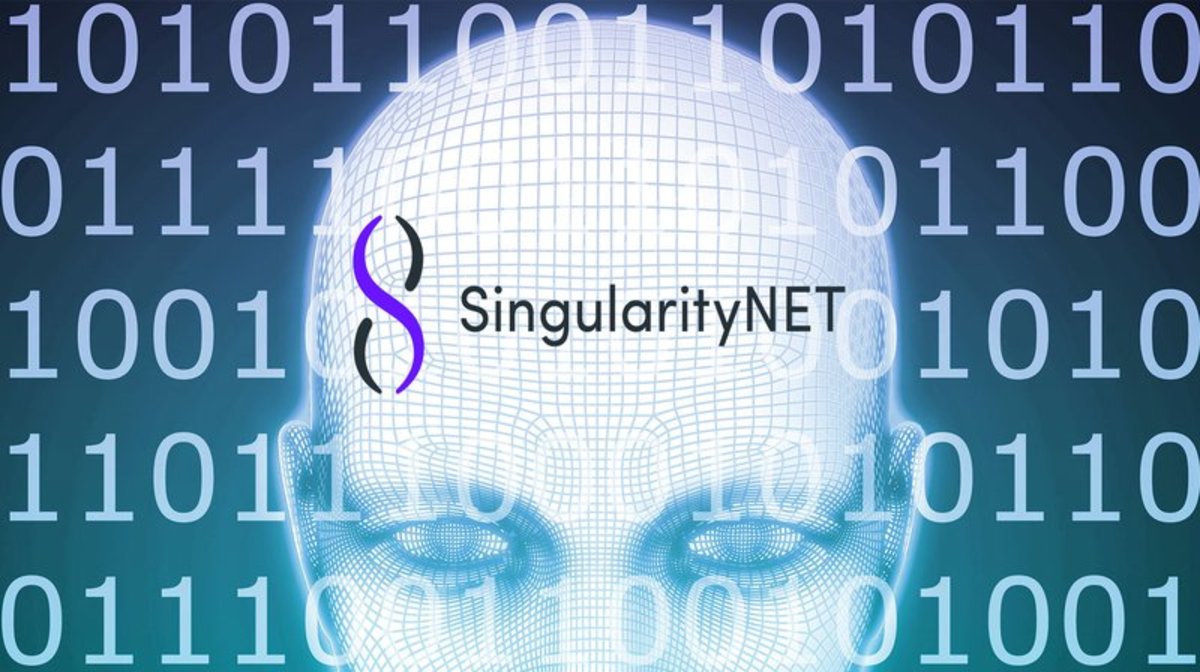
Artificial Intelligence (AI) startup SingularityNET, recently covered by Wired as “the most tech-hype idea of the year,” wants to democratize AI research and facilitate the emergence of human-level AI on a decentralized, open-source platform.
SingularityNET operates on a belief that the benefits of AI should not be dominated by any small set of powerful institutions but should be shared by all. A key goal of SingularityNET is to ensure the technology is benevolent according to human standards, and the network is being designed to incentivize and reward beneficial players. The startup is developing interoperability standards for AIs, which could radically improve the process of discovering and coordinating AI services, while allowing developers to easily monetize AI technology.
SingularityNET positions itself both as a critical mediator across all future AI developments, as well as a hub for free and open AI technologies owned by the crowd, where anyone can acquire or monetize AI services.
Blockchain-based smart contracts will be central to SingularityNET operations, allowing users to combine multiple AI technologies to create custom AI stacks. The initial implementation of SingularityNET will be built on Ethereum, with smart contracts written in Solidity.
“AI is currently very fragmented and narrowly trained,” Simone Giacomelli, founder of Vulpem and co-founder of SingularityNET, told Bitcoin Magazine. “Blockchain technology and smart contracts make economic collaboration over the internet easier than ever before, aligning incentives mechanisms for different AIs to be optimized as one. SingularityNET leverages this collaborative power to make AI work together.”
SingularityNET is the brainchild of AI researcher Ben Goertzel and robotics designer David Hanson, founder of Hanson Robotics. The robot Sophia, developed by Hanson Robotics, attracted media attention when it was recently granted citizenship in Saudi Arabia.
While the SingularityNET project is still partly in stealth mode, it has been presented at recent blockchain events, including Wired’s Nextfest in Italy, SWITCH Singapore and the World Blockchain Forum in London.
At the recent Ethereal Summit in San Francisco, Goertzel showcased Sophia to demonstrate the power of AI and the potential of incorporating AI and blockchain technology to create a decentralized, open-source, blockchain-powered AI network that operates like, and can be thought of as, a thinking brain.
While on the SingularityNET roadshow, Goertzel is taking time from his busy schedule to write a series of posts on SingularityNET.
“SingularityNET is intended as a platform in which an AGI [Artificial General Intelligence] can emerge from the combination of multiple humans and multiple human-created software programs, possessing varying degrees of general intelligence on their own,” Goertzel told Bitcoin Magazine. “It doesn't eliminate the need for fundamental algorithmic work on AGI reasoning and learning and memory, but it provides a context in which such algorithmic work can have a rapid, transformative impact.”
Goertzel makes a distinction between narrow AI and Artificial General Intelligence (AGI). While narrow AI programs are finding applications in a growing range of industries, they are not effectively integrated into overall AGI systems with general-purpose intelligence like that of humans. Therefore, Goertzel is persuaded that the next big step in the evolution of AI is going to be the transition from AI to AGI. SingularityNET wants to support this transition with an open market in which various AI algorithms can cooperate and form new patterns of emergent intelligence.
“The actual design that has been formulated is a quite practical system that is being implemented in quality software code and will serve real corporate customers and become a large and lucrative business,” continued Goertzel. “But at the deepest level, the underlying philosophical and emotional motivations David Hanson and I had for creating SingularityNET, are transhumanist ones.”
Goertzel and Hanson are, in fact, among the leading advocates of transhumanism, defined as the prospect of using advanced technology to radically change, hopefully for the better, the human condition. Enabling transhumanist technologies would include life extension, uploading human minds to futuristic supercomputers, and sentient AGI way smarter than humans, which is the target of SingularityNET.
In his 2010 book A Cosmist Manifesto, which blends transhumanist technology and enlightened spirituality, Goertzel proposed a practical philosophy able to inform the next phases of human history and transhumanist evolution.
Ultimately, Goertzel wants to create “a massively transhuman, overwhelmingly beneficial Ubermind” that evolves and grows continuously out of human mind and culture.
“One way to achieve this would be to via brain-computer interfacing — and this is going to happen,” Goertzel told Bitcoin Magazine. “Of course the computer portion of cyborgs made with brain-computer interfaces will jack into this emerging AGI society, economy and culture as well, and then we will get a supermind.”
“This emerging supermind, as it grows, will provide ways for people to earn a living and sometimes even generate tremendous wealth, as part of its growth process,” concluded Goertzel. “And it will donate parts of its resources to the common good of all humans, including underprivileged ones, as a way of helping drive its growth forward toward its objectives of joy, growth and choice.”
Goertzel shared with Bitcoin Magazine parts of the draft SingularityNET white paper, a living document still under tight wraps.
“A blockchain-based framework designed to serve the needs of AI agents as they interact with each other and with external customers can enable the emergence of a collective intelligence,” notes the draft white paper. “The use of cryptocurrency and blockchain for AI services provides a number of advantages. It allows AI agents to exchange work and subcontract with a high degree of flexibility, and also enables AI-based microservices to be offered to any customer via easily accessible APIs (enabled by smart contracts under the hood).”
Goertzel, Hanson and the SingularityNET team want to balance long-term visionary thinking with practical market needs and business concerns. In their view, the platform could enable AIs to learn from each other and collaborate, which would be one of the biggest breakthroughs ever in the evolution of AI, causing a subsequent impact on the global AI market, which is projected to grow from $233.8 billion in 2017 to $3.1 trillion in 2025.
“From day one, SingularityNET will offer AI agents,” continues the white paper. “The open design of the network, and the economic incentives, should then encourage additional AI developers to add their own AI nodes via the SingularityNET API.”
While many nodes will run on powerful supercomputers in the cloud, others will be embedded in Internet of Things (IoT) devices, and humanoid robots like Sophia will be supplied with on-board SingularityNET nodes. The upcoming SingularityNET token, details of which haven’t been disclosed yet, will play a central role in the network’s operations.
The project is about to launch an Initial Coin Offering (ICO) to fund the full development of its platform, to be fully deployed in 2018. “This ICO will allow us to start with a bang,” said Goertzel. “We'll be competing with Google and Facebook...so having a war chest would allow us to take on them more easily.”









